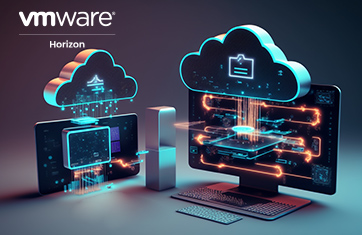Omnissa
What is Omnissa?
Omnissa is the rebrand of the former VMware End-User Computing (EUC) business. Omnissa is owned by the private equity firm KKR.

Details of the Omnissa brand were announced by Broadcom in April 2024, see: Introducing Omnissa, the former VMware End-User Computing business - VMware End-User Computing Blog.
VMware registered Omnissa as a trademark in January 2024, details: OMNISSA Trademark Application of VMware, LLC - Serial Number 98365706 :: Justia Trademarks.
The Omnissa website can be found, here: Omnissa. The Omnissa Community site can be found, here: Home - Omnissa Community.
Omnissa encompasses former VMware products, such as:
Industry reaction to Omnissa launch
Many analysts and journalists published their thoughts and reactions to the Omnissa Brand launch, here are a few:

What does Omnissa mean?
Nothing really. Someone seems to have chosen a word that wasn’t already trademarked and isn’t offensive in any language. "Omnissa" does not have a well-established origin or meaning in existing dictionaries. However, it bears resemblance to the Latin prefix "omni-" which means "all" or "every." The suffix "-issa" doesn't have a direct equivalent in Latin but could be interpreted as a suffix for feminine nouns in certain Romance languages.
There was a pre-existing use of OmniSSA as an acronym for an astronomical instrumentation project at Georgia Tech – the Omnidirectional Space Situational Awareness system.
What is Omnissa Horizon?
Omnissa Horizon (formerly called VMware Horizon and previously VMware View) is a leading technology for secure delivery of virtual desktop and applications across private, public, and hybrid cloud environments. Using the Horizon Client application installed on client devices, users can connect to the Horizon infrastructure. Users can also use a web browser as an HTML client when accessing the Horizon infrastructure from devices on which installing client software is not possible. With the PCoIP and Blast Extreme protocols available, Omnissa Horizon facilitates the delivery of high-end graphics and video content. Instant Clones and App Volumes technologies in Horizon enable fast and on-demand delivery of desktops.
Horizon allows administrators to create and broker connections to Windows and Linux virtual desktops, Remote Desktop Server (RDS)–hosted applications and desktops, Linux-hosted applications, and Windows physical machines.
Note: Like many Omnissa / VMware partner vendors it will take us a while to rebrand our VMware Horizon content to Omnissa Horizon. The product itself remains unchanged so please take “VMware Horizon” to be used interchangeably with “Omnissa Horizon” during the transition.
How does Omnissa Horizon compare to other VDI solutions?
Omnissa Horizon is a digital workspace technology and as such customers often evaluate it against other VDI and DaaS offerings. Common alternative vendors and technologies considered often include Citrix CVAD, Microsoft RDP / AVD / Windows 365 Cloud PC, Amazon Workspaces and Parallels. Some information on comparing some of the alternatives to Horizon is provided, here: Best VDI Technology: Citrix, VMware, AWS, AVD.
Common Omnissa Horizon issues
Remote access technologies, such as Omnissa Horizon, are extremely performance sensitive. A lag of even a few seconds between a key being typed by a user and the character being seen on the screen can be extremely discomforting to the user. Likewise, if a session gets disconnected abruptly, a user may lose his work completely. Hence, poor user experience can result in user dissatisfaction, loss of productivity, and direct loss of business revenue.
Omnissa Horizon administrators need to ensure that user experience remains within acceptable limits. There are many facets to user experience. The first impression of the user is based on the speed of the logon process. Hence, logon processing must be fast. Once the user logs in and when they click on an application (e.g., Microsoft Outlook, Google Chrome, etc.) to launch it, the application should launch within a few seconds. When the user interacts with the application, the keystroke lag or screen refresh latency should not be very high. If audio/video applications (e.g., Microsoft Teams) are being used, sufficient bandwidth should be available for the user’s session. Horizon administrators must measure all the different facets of a user’s experience. As users may be accessing from different remote locations, it is important to track performance by location too.
Logon times are extremely important to the user experience in Omnissa Horizon environments and many continually test logon performance with synthetic monitoring tools such as logon simulators, see: Free Logon Simulator for VMware Horizon | eG Innovations.
What monitoring tools are available for Omnissa Horizon?
This is one area where the divestiture of Horizon from VMware to Omnissa has brought some material changes to the Horizon System Administrators’ options. Aria SaaS, a cloud version of VMware’s Aria monitoring management tools (which were previously sold under the “vRealize” brand) was reported killed, see: Amid subscription push, VMware killed a SaaS product • The Register.
Faced with user complaints, the Omnissa Horizon administrator must determine which of the several Horizon tiers is not working as expected. This requires in-depth analysis of availability, performance, and usage of all tiers involved in supporting the virtual app/desktop service. VMware vROPs (vRealize Operations), renamed in recent years as VMware Aria Operations, was the built-in tool supplied with Horizon. Omnissa currently supply monitoring that is essentially Aria.
Third-party solutions, such as eG Enterprise also help by providing additional insights into the performance of all the different Horizon tiers including App Volumes and VMware ESXi / vSphere, as well as the other infrastructure tiers, such as storage, network, Active Directory, profile servers, etc.
When considering your VMware Horizon monitoring and troubleshooting requirements you may like to consider some of the capabilities listed in: Horizon Monitoring Tool: Top 5 Key Capabilities.
For details on eG Enterprise’s support for Omnissa Horizon, please see: VMware Horizon Monitoring for VDI Troubleshooting (eginnovations.com).




